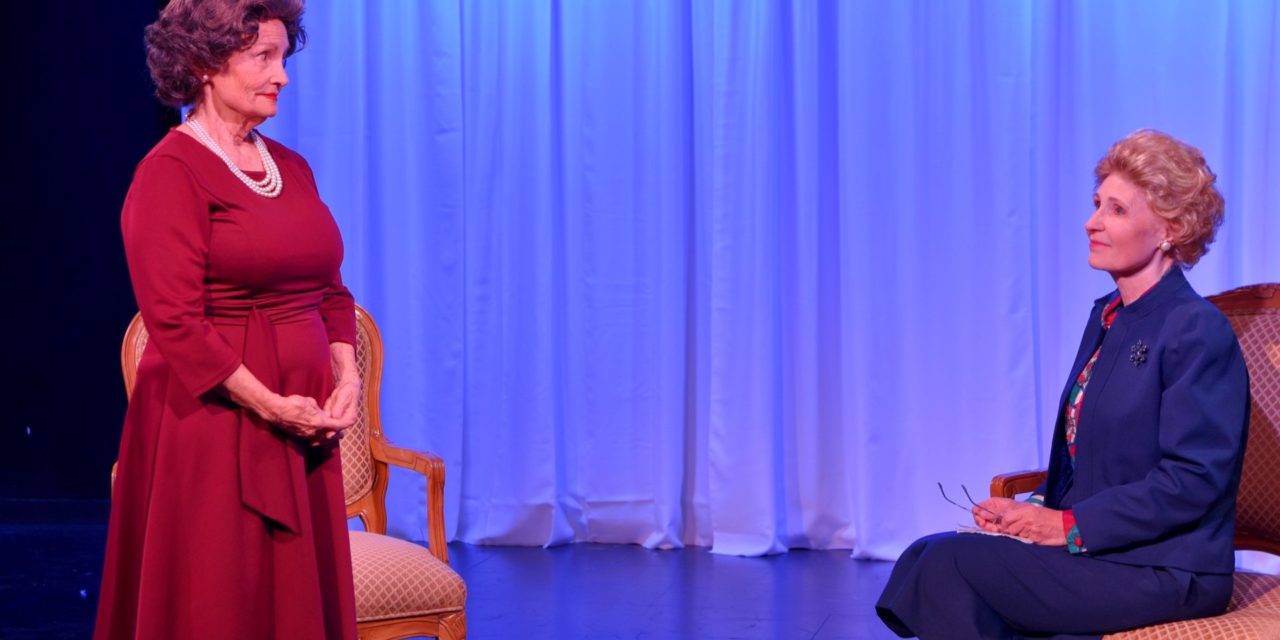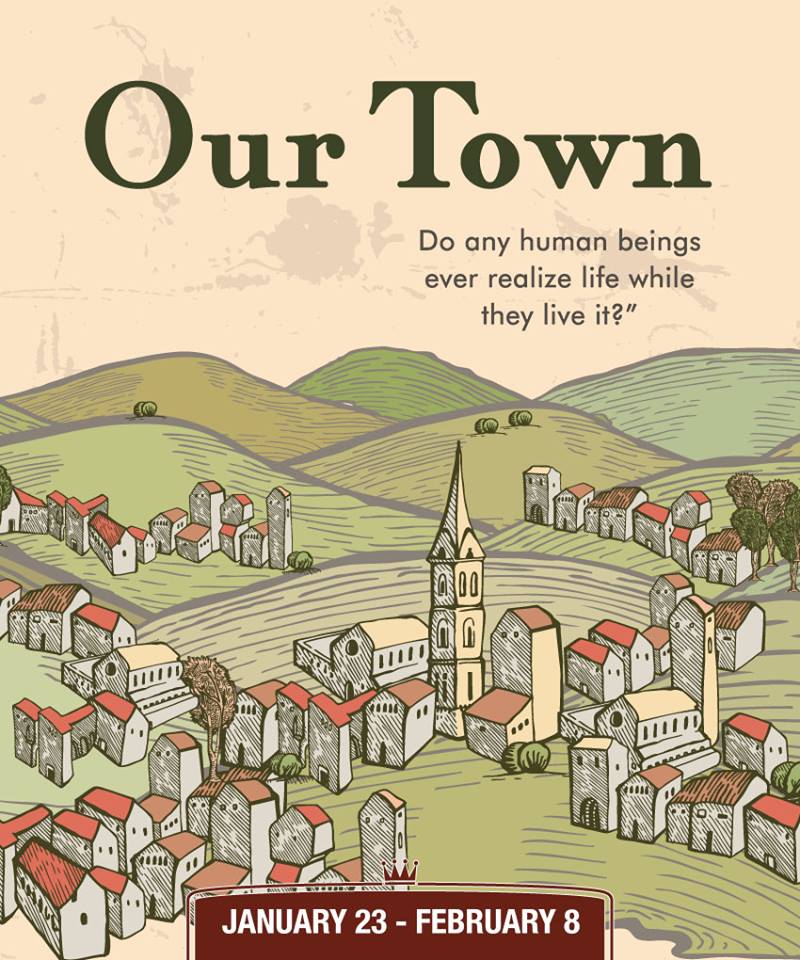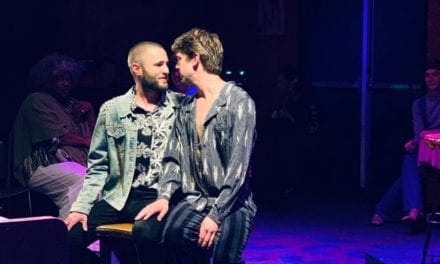PLEASANT GROVE — Prior to his creation of the hit Netflix series The Crown, Peter Morgan brought Queen Elizabeth II’s royal and political journey to the theatre with The Audience. While the stories and the conflicts presented in the show and the play overlap, the stage offers a more intimate and concise presentation of the queen’s maneuverings in finding her place in the country and among politics. The tale unfolds exclusively by recreating conversations with various prime ministers throughout her reign. To quote the show directly, “Inhumanity is the primary requirement of the top job,” and this is the singular test that both the Queen and her PM’s face throughout The Audience.
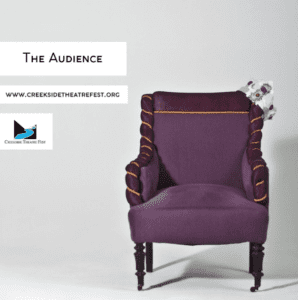
Show closes June 25, 2022.
The Queen takes her meetings each Tuesday evening with the sitting Prime Minister in the audience room in Buckingham Palace to discuss current events and orders of business. The Audience recreates these meetings with themes of crown versus government spanning over decades and representing most PM’s of Queen Elizabeth’s reign. The show is effectively staged in a small black box theatre with limited props and sound design and an introduction to the set by the equerry describing the audience room in a way that each audience member can imagine the room for themselves. While I craved chronology in this historic showing, the play effectively bounces around to difference timepoints, choosing which conversations of Queen Elizabeth’s reign that best represents her challenges of being in power entirely in form — but under no circumstances in substance.
I enjoyed Creekside Theatre Festival’s choice in show and found the glimpses into the past entertaining and interesting. I share with most Americans a fascination with monarchy, especially that of such an iconic queen. Satisfyingly, Jayne Luke brings Queen Elizabeth II to life. Luke as the Queen is charming and quick, but also refined and stern. Both stubborn and tactful, yet with an undeniable sense of duty, Luke is everything I expect the Queen to be in the conversations, whether she is engaging in small talk or high conflict. Luke made the show. I do not envy the task she had at hand of performing in every scene and having to create a believable dialogue and rapport with seven prime ministers, considering the short time amount of stage time with each of them. Luke as Elizabeth brings a fiery passion in the scene defending her efforts with the commonwealth, a strong sense of tradition in fighting to keep her yacht, and a tactful strategist in bargaining with Churchill regarding the timing of her coronation. Dynamic and convincing, Jayne Luke is Queen Elizabeth II.
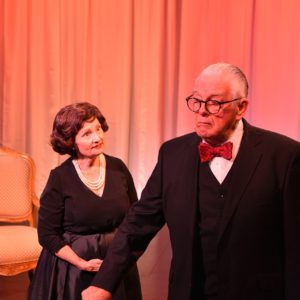
Jayne Luke as Elizabeth II and Ron Fredrickson as Winston Churchill.
While not every Prime Minister’s performance was at the same level of quality, there was not a bad one in the bunch. Ron Fredrickson as Winston Churchill gave a memorable performance becaues he captured the physical and personality quirks expected of Churchill, adopting a limping gait, trembling hand, and audacious air. Marilee VanWagenen successfully played Margaret Thatcher, and the scene with Thatcher brashly confronting the Queen was the most charged with tension. Each actor playing well off the other.
Mark Pulman played Harold Wilson, the queen’s pet prime minister. I enjoyed the scenes with Pulman and Luke, as these offered a more conversational and relaxed presentation of the queen and the pair had a great onstage chemistry together. The success of the play is the combination of big event scenes and also displaying a human and day to day peek into the Queen’s life as ordinary-ish person. Pulman and Luke successfully added this welcome dynamic.
Directed by Justin Ivie, The Audience had many successes and engaging scenes. I most enjoyed the closing scene of Act I in which Elizabeth relives her coronation. The costume of grand red robes and an elaborate crown, combined with a recording of the coronation and Elizabeth’s reverie, created a powerful scene that offers a respite from the stream of dialogue.
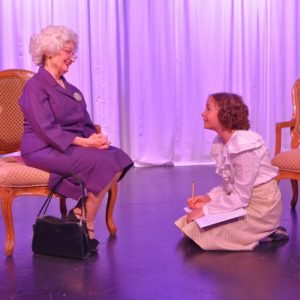
Jayne Luke as Elizabeth II and Jane Wilkins as Young Elizabeth.
While Ivie has some success in breaking up the dialogue and mixing time and place, not all attempts were fruitful. Some scenes that introduced young Elizabeth (as a child) are confusing. At first appearance, I thought she was Queen Elizabeth’s daughter, rather than her younger self. When young Elizabeth was used as an aside to enhance a previous scene, such as when she is expounding on Elizabeth’s commitment to the commonwealth from the past, I found the use of a child actor to be a great addition. However, when young and adult Elizabeth engaged in dialogue, I felt confused in the purpose of this. Nonetheless, Jane Wilkins performed excellently as young Elizabeth.
Additionally, while I am fascinated with the English monarchy and was often able to glean the place in time from context clues, I was also chronologically lost at times. I am not well enough acquainted with British politics from the last 70 years to form an appropriate context with each prime minister introduced. Again, I wish this play was presented chronologically. An American adaptation of The Audience may benefit from adding a year to the equerry’s introductions when prime ministers are arriving to the audience room.
The Audience is an enjoyable play that would be especially interesting to those who keep up with the British monarchy or enjoy 20th century history. While the show did have some shortcomings, as a whole, it is worth seeing. Jayne Luke’s performance alone warrants the ticket price and the trip to Pleasant Grove.

